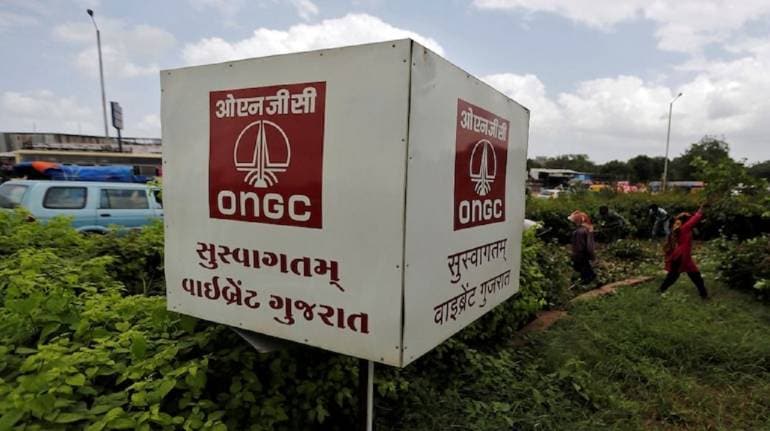
ONGC, partners to splash $6.2 billion on green energy projects
India Ongc’s top oil explorers and their partners will invest USD 6.2 billion (RS 50,000 crore) in the green energy project to produce carbon -free hydrogen and green ammonia as part of ambitious decarbonization encouragement, officials said.
The State Oil Oil and Natural Gas Company (OngC) has signed a pact with Greenko, one of the largest renewable energy companies in India, to form a 50:50 joint venture for the green energy project.
JV will regulate Solar and Wind Power Project 5.5-7 Gigawatt (GW), and use electricity produced from plants to divide water in electrolyzers to produce green hydrogen, which in turn will be used for the manufacture of green ammonia, they said.
Renewable plants along with the Greenko pump power plant system will provide 1.4 GW Electricity all the time (RTC) which will be used to produce 0.18 million tons of green hydrogen per year (around 20 kg per hour).
This hydrogen will be mixed with nitrogen to produce 1 million tons per year of green ammonia, which in the early years will be exported to Europe, Japan and Korea and used domestically when the market develops, they said.
Officials say the renewable energy component from the chain will cost around USD 5 billion while the hydrogen and ammonia plant will cost 1.2 billion USD. Ongc wants to regulate hydrogen and ammonia plants, which are likely to start production in 2026, on the west coast, preferred near Mangalore, where it has oil refineries.
If the land is not available, the project can switch to Gujarat, they said. Ongc, the largest producer of crude and natural gas in the country, joins people like Reliance Industries Ltd. and Adani groups in pursuing carbon-free hydrogen.
Both private groups have announced multi-miliar projects as part of Indian zero-zero. Ongc, the largest producer of crude and natural gas in the country, joins people like Reliance Industries Ltd. and Adani groups in pursuing carbon-free hydrogen.
While hydrogen is the cleanest fuel known with zero carbon emissions, it is difficult to transport and most of their production is used globally (in place). And for this reason, Ongc is looking for the manufacture of green ammonia from hydrogen.
Ammonia, which is widely used as fertilizer, can be easily sent. The cost of production of ammonia green is high, and its use in India will be limited to start. In countries like Japan and Korea, the law regulates the use of certain green ammonia percentage and therefore they can become a natural market.
Green ammonia can also be used as sea fuel. Globally, hydrogen is seen as decarbonized fuel because it can replace polluted fossil fuels.
India is targeting the production of 5 million tons of green hydrogen per year in 2030. Hydrogen is the lightest and most abundant element in the universe, but is almost not in pure form. Conversely, it is abundant in chemical compounds, especially bound to oxygen in water or carbon to form hydrocarbons such as fossil fuels.
For that reason, hydrogen is not considered a source of energy but an energy carrier or vector. After being separated from other elements, hydrogen utility increases: can be converted into electricity through fuel cells, can be burned to produce heat or power without emitting carbon dioxide, used as chemical raw materials, or as reducing agents to reduce iron ore into iron ore into into iron ore into iron ore into iron ore into iron ore into iron into iron ore into iron ore into iron into iron into iron ore into iron into iron into iron ore into seeds into seeds Iron into iron into iron ore into iron into iron ore into iron into iron ore into iron into iron ore into iron into iron into iron ore into the inside Iron into the iron into the iron into the iron into the iron into the iron into the iron into the one that happened to be the one that happened “which became wise IH Iron which is the other reduced which is the “” pure iron for steel production. “Transporting hydrogen is a problem and therefore consumed in-situ,” said one of the officials. “And the green ammonia makes sense to us. We have the availability of nitrogen ready.”
Globally, around 85 percent of hydrogen is captured, produced and consumed in place, especially in petroleum refineries. Most of the hydrogen currently produced in India is gray (produced from fossil fuels) or blue (produced from natural gas with side products that are captured and stored).
Green hydrogen is made using electrolysis powered by renewable energy to divide water molecules into oxygen and hydrogen, creating emission -free fuels. Fossil -based hydrogen currently costs around USD 1.80 per kilogram, while the cost of blue hydrogen, which is produced using natural gas and carbon capture, is estimated to be around USD 2.40 per kilogram. Green highrogen worth USD 3-4.




